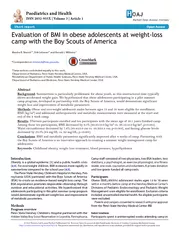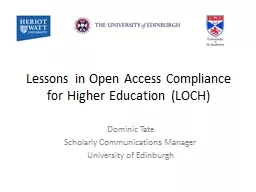PDF-Short report Open Access Marsha B
Author : trish-goza | Published Date : 2015-04-09
Novick 1 Erik Lehman 2 and Ronald J Williams 3 Abstract 57513 2015 Novick et al licensee Herbert Publications Ltd 57375is is an Open Access article distributed under
Presentation Embed Code
Download Presentation
Download Presentation The PPT/PDF document "Short report Open Access Marsha B" is the property of its rightful owner. Permission is granted to download and print the materials on this website for personal, non-commercial use only, and to display it on your personal computer provided you do not modify the materials and that you retain all copyright notices contained in the materials. By downloading content from our website, you accept the terms of this agreement.
Short report Open Access Marsha B: Transcript
Download Rules Of Document
"Short report Open Access Marsha B"The content belongs to its owner. You may download and print it for personal use, without modification, and keep all copyright notices. By downloading, you agree to these terms.
Related Documents














